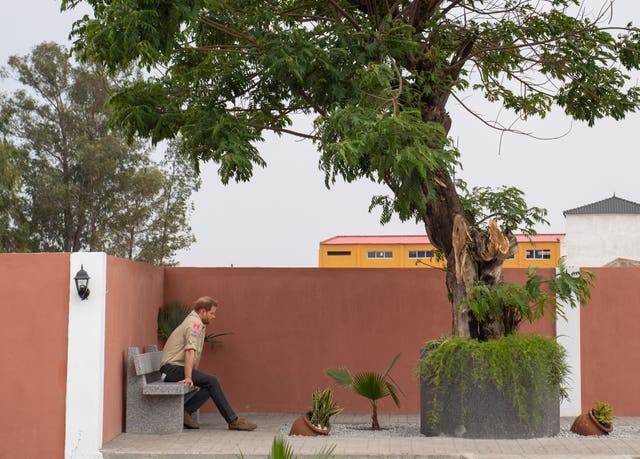Harry shares own tree photo as he guest edits National Geographic’s Instagram
The duke is promoting the Looking Up campaign to raise awareness of the environmental benefits of trees.

The Duke of Sussex has shared an image he took of Baobab trees in Malawi’s Liwonde National Park as he guest edits the National Geographic’s Instagram account.
Harry included a photo of himself lying on the ground beneath the vast trees to capture the shot.
Harry wrote on the post that the National Geographic’s social media account, which has 123 million followers, is one of his personal favourites.
“Hi everyone! I’m so happy to have the opportunity to continue working with @NatGeo and to guest-edit this Instagram account; it’s one of my personal favourites,” he wrote.

“As part of this takeover, I am inviting you to be a part of our ‘Looking Up’ social campaign.
“To help launch the campaign, here is a photograph I took today here in Liwonde of Baobab trees.”

He added: “I will be posting my favourite images from @NatGeo photographers here throughout the day, and over on @SussexRoyal I will be sharing some of my favourite images from everything you post.
“I can’t wait to see what you see when you’re #LookingUp”, he added, followed by two tree emojis.
Harry later added an image by acclaimed nature photographer Peter Essick of a strangler fig, which was taken in the Yidney Scrub Rainforest on Fraser Island, Australia.
“Thanks for sharing this, Peter, and for #LookingUp.”
Buckingham Palace said the initiative was aimed at encouraging people from all over the world “to look up and share the beauty of trees”.

Almost 50 countries are taking part and have already dedicated indigenous forest for conservation, or have committed to planting millions of new trees to help combat climate change.
Harry has launched 15 QCC projects across the world including in the Caribbean, the UK, New Zealand, Australia and Tonga.
The duke helped plant a Baobab tree during his visit to the Chobe National Park in Botswana last week.

They are native to tropical African countries, including South Africa, Botswana, Namibia and Mozambique, but have also been planted in India and Australia.
They are the biggest and longest-living flowering tree and grow to an enormous size, and are believed to live for more than 3,000 years.
The trees bear fruit that can feed both people and animals, and the hollow trunks of older specimens can hold thousands of litres of water, with elephants sometimes tearing the trees down to get to the moisture inside.
Legend has it that if you pick a flower from a Baobab tree you will be eaten by a lion, but if you drink water in which a Baobab’s seeds have been soaked you will be safe from a crocodile attack.





